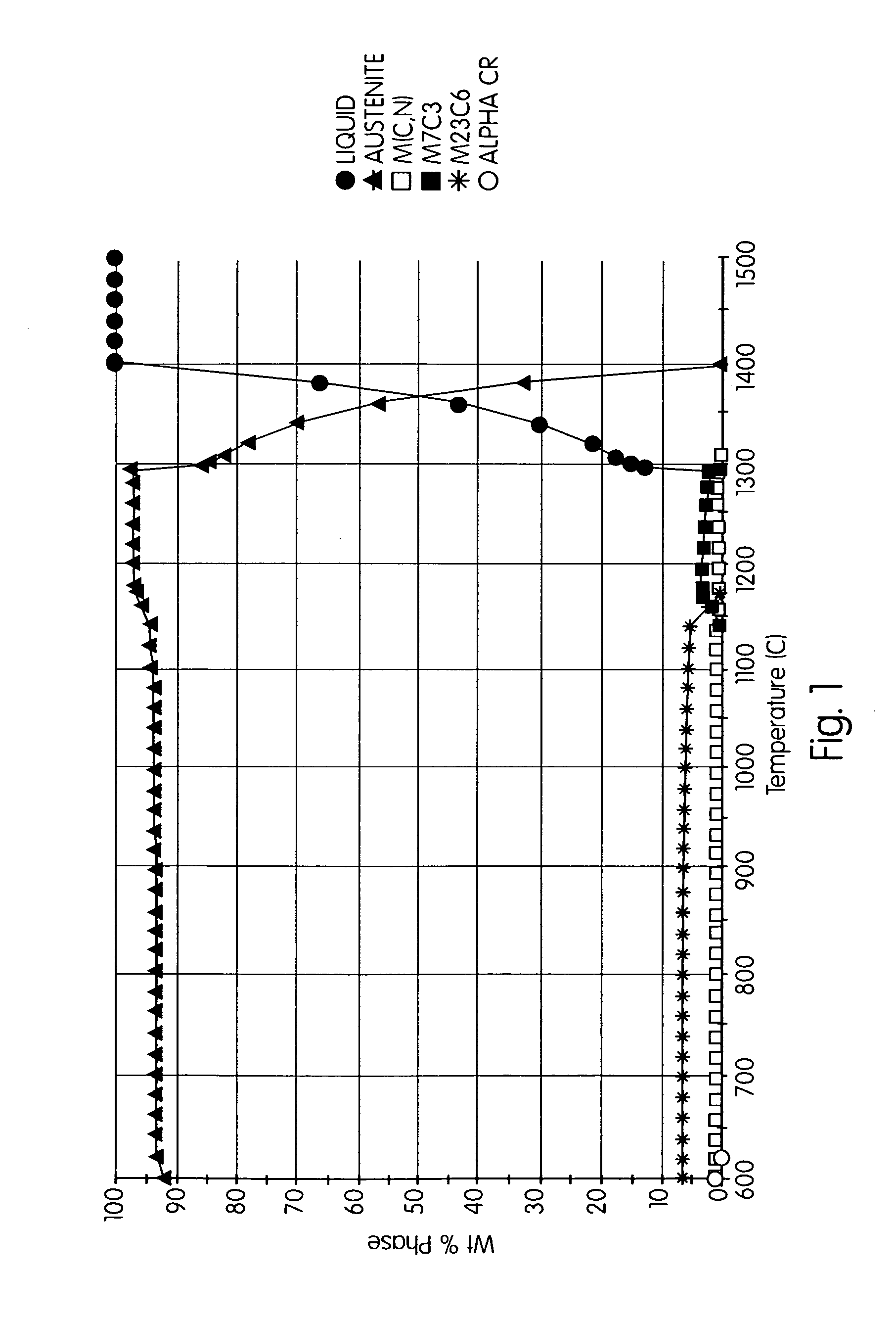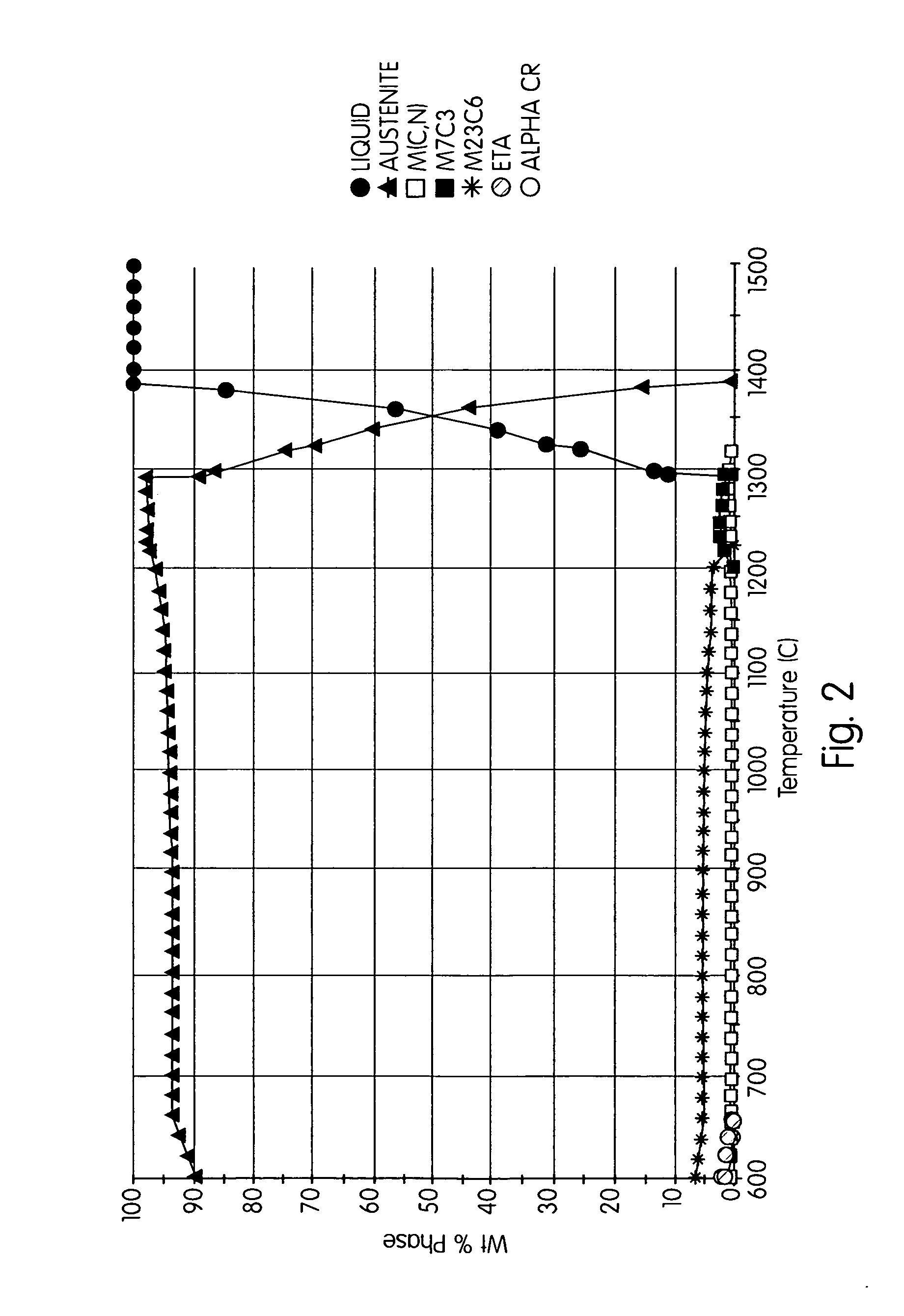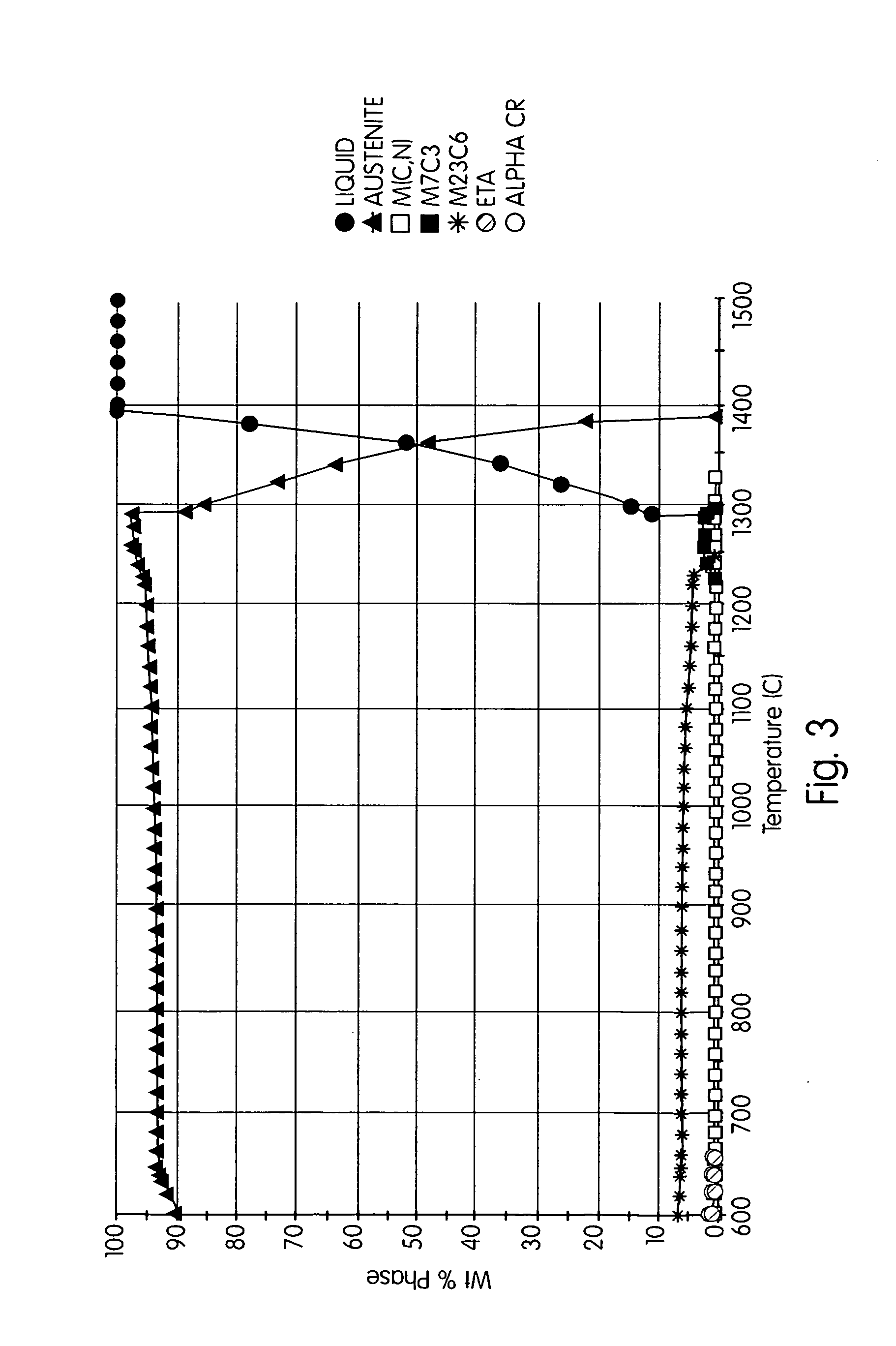Cast heat-resistant austenitic steel with improved temperature creep properties and balanced alloying element additions and methodology for development of the same
a technology of austenitic steel and temperature creep, applied in the field of new austenitic steel compositions, can solve the problems of significant effort, cost and time, and little work performed in recent times on improving the properties of h-series alloys, and achieve the effect of improving creep resistan
- Summary
- Abstract
- Description
- Claims
- Application Information
AI Technical Summary
Benefits of technology
Problems solved by technology
Method used
Image
Examples
Embodiment Construction
[0034]The invention will now be described in detail in relation to the preferred embodiments and implementation thereof which is exemplary in nature and descriptively specific as disclosed. As is customary, it will be understood that no limitation of the scope of the invention is thereby intended. The invention encompasses such alterations and further modifications in the illustrated compositions and methods, and such further applications of the principles of the invention illustrated herein, as would normally occur to persons skilled in the art to which the invention relates.
[0035]As used herein in the specification and claims, including as used in the examples and unless otherwise expressly specified, all numbers may be read as if prefaced by the word “about”, even if the term does not expressly appear. Also, any numerical range recited herein is intended to include all sub-ranges subsumed therein.
[0036]And now with reference to FIGS. 1-9b, the present invention is described below...
PUM
| Property | Measurement | Unit |
|---|---|---|
| temperature | aaaaa | aaaaa |
| temperature | aaaaa | aaaaa |
| temperature | aaaaa | aaaaa |
Abstract
Description
Claims
Application Information
 Login to View More
Login to View More - R&D
- Intellectual Property
- Life Sciences
- Materials
- Tech Scout
- Unparalleled Data Quality
- Higher Quality Content
- 60% Fewer Hallucinations
Browse by: Latest US Patents, China's latest patents, Technical Efficacy Thesaurus, Application Domain, Technology Topic, Popular Technical Reports.
© 2025 PatSnap. All rights reserved.Legal|Privacy policy|Modern Slavery Act Transparency Statement|Sitemap|About US| Contact US: help@patsnap.com



